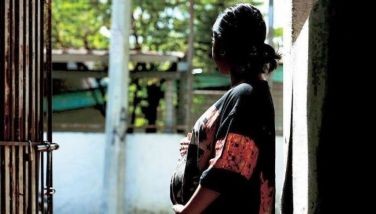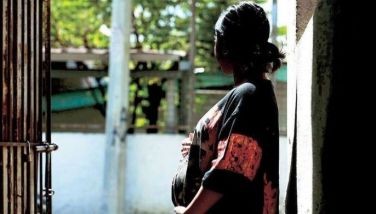30 dead amid cholera outbreak in Bicol
October 8, 2005 | 12:00am
At least 30 people have died after a cholera outbreak struck the impoverished Bicol region of the Philippines, health officials said yesterday.
Sixteen deaths have been reported near the coastal town of Caramoan, 325 kilometers southeast of Manila, since June, officials said, while 14 other deaths have been reported on the island of Catanduanes, east of Caramoan, since August.
No new deaths have been reported for the past five days and there has been a "significant reduction in the number of cases," Enrique Tayag, chief of the health department’s National Epidemiology Center, told AFP.
"We have sent a team down there," Tayag said. "They are instituting control measures."
At least 805 cases have been documented in Caramoan and in 13 towns on Catanduanes, the official said. Thus far, 25 of the 30 fatalities have been confirmed to be caused by the vibrio cholerae bacteria, the official added.
Confirmation of the other five cases was pending.
Most of the victims are children but "for the past five days there have been no new deaths, which is very good," Tayag said.
Cholera is an infectious and sometimes fatal bacterial disease of the small intestine.
Jose Aricheta, of the health department’s environment and occupational health office, told AFP the twin outbreaks were caused by hygiene issues in impoverished coastal communities that had endured heavy rains in recent weeks.
Typhoon-lashed Bicol is one of the Philippines’ poorest regions.
The affected communities lacked safe tap water and some did not have sanitary latrines, Aricheta said. The flooding "contaminated their drinking water drawn from shallow wells and springs," he said.
Since most are located on the coast, "they cannot dig deeper because the water would turn salty," he added.
Aricheta said sporadic cholera outbreaks have hit the Philippines over the past few years. Two northern provinces were also hit hard last year, he added. — AFP
Sixteen deaths have been reported near the coastal town of Caramoan, 325 kilometers southeast of Manila, since June, officials said, while 14 other deaths have been reported on the island of Catanduanes, east of Caramoan, since August.
No new deaths have been reported for the past five days and there has been a "significant reduction in the number of cases," Enrique Tayag, chief of the health department’s National Epidemiology Center, told AFP.
"We have sent a team down there," Tayag said. "They are instituting control measures."
At least 805 cases have been documented in Caramoan and in 13 towns on Catanduanes, the official said. Thus far, 25 of the 30 fatalities have been confirmed to be caused by the vibrio cholerae bacteria, the official added.
Confirmation of the other five cases was pending.
Most of the victims are children but "for the past five days there have been no new deaths, which is very good," Tayag said.
Cholera is an infectious and sometimes fatal bacterial disease of the small intestine.
Jose Aricheta, of the health department’s environment and occupational health office, told AFP the twin outbreaks were caused by hygiene issues in impoverished coastal communities that had endured heavy rains in recent weeks.
Typhoon-lashed Bicol is one of the Philippines’ poorest regions.
The affected communities lacked safe tap water and some did not have sanitary latrines, Aricheta said. The flooding "contaminated their drinking water drawn from shallow wells and springs," he said.
Since most are located on the coast, "they cannot dig deeper because the water would turn salty," he added.
Aricheta said sporadic cholera outbreaks have hit the Philippines over the past few years. Two northern provinces were also hit hard last year, he added. — AFP
BrandSpace Articles
<
>
- Latest
- Trending
Trending
Latest
Trending
Latest
Recommended































